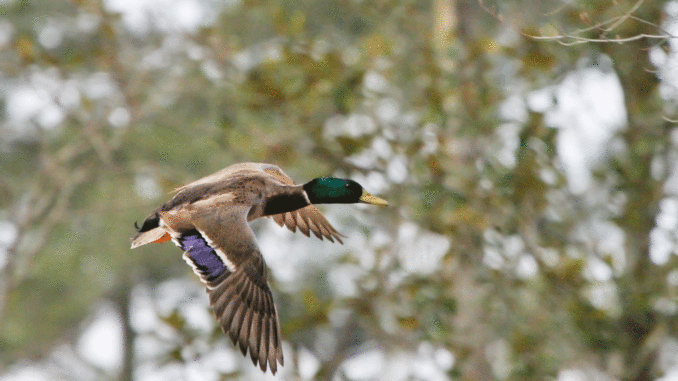
For big water, this Midlands reservoir is a waterfowler’s heaven. Here’s how to fill your limit.
The predawn cold rattled my bones as I pulled my neoprene waders up over many layers of insulation. Sunrise was still a couple of hours away, and the anticipation of big ducks swooping into our decoys helped me stave off the cold as I pulled the waders up as far as they would reach. The dirt ramp was longer than normal; we had to drag the boat out a hundred yards to deeper water before climbing in and heading upstream.
e were at the confluence of the Saluda River and Lake Greenwood in pursuit of waterfowl on a cold, December morning. For close to 10 years, we’ve made this pilgrimage up the Saluda to coves and sloughs where we spread our decoys, build a temporary blind and call to lonesome ducks. In all of the years we have made this our waterfowl home, we have seldom seen another hunter. The ducks are here, and few people seem to know about it.
This area of Lake Greenwood is sparsely populated; houses are few and far between, and when hunting large reservoirs, the population density is one of the most-important elements when deciding where to hunt. By law, we have to be a minimum of 300 yards from a residence, plus common sense dictates that we extend that buffer a little to prevent spraying homes with falling shot and to prevent people from spooking the waterfowl.
An aerial photo of the upper reaches of Lake Greenwood shows the Saluda and Reedy rivers, two large channels of waterfowl opportunities. The dirt ramp at Soul’s Harbor is the best access point for the Saluda. When hunting this area, you will need either a pop-up blind or be ready to construct one; there are few places to hide a boat here. I prefer to construct a blind out of native material on-site; I can usually get this done in 15 minutes and be ready to hunt.
When hunting the rivers, a big decoy spread isn’t necessary. A couple dozen will more than suffice and bring in even the wariest of ducks. When hunting flowing water, setting up out of the current is best; the upper reaches of Lake Greenwood offer plenty of coves, backwaters, beaver ponds and marshes just out of the channel that will invariably draw the ducks that are looking for a rest or a place to feed.
Marshall French, the head guide at Duck Bottom Plantation in Horatio, has hunted ducks in upper reaches of Lake Greenwood for years and is somewhat of a local legend when it comes to killing ducks where no one else can even find them.
When hunting the upper reaches of Lake Greenwood, French said, “Less is more; these ducks don’t congregate in large numbers, and large decoy spreads or loud calling will do more harm than good.
“I use no more than a half-dozen decoys: two big ringneck decoys for eye appeal and a couple of mallards, throw in some quiver disks and that’s all that’s needed.”
French said he likes to arrange his decoy spread in a “loose ‘J’ with a good landing area for the ducks to get to.”
Lake Greenwood’s ducks are mostly natives, and they are used to some human encroachment, but French never hunts from his boat, preferring a temporary blind constructed on the spot.
“I will pull my boat up a few hundred yards away from where I plan to hunt and hide it among the vegetation,” he said. “Then go construct a blind out of the local fauna and/or sit among the many trees that line the river.”
If your preference is the Reedy River, Simpson’s Store just outside Waterloo offers the best access, putting you right in the heart of some of the best duck hunting on Greenwood. The Reedy is a great location for wood ducks, and if you prefer to hunt from a boat, there are great locations to hide in willows and overhanging limbs. Large areas of flats, marsh and bullrushes will draw the ducks and make them feel comfortable.
When I hunt the Reedy, I prefer to wade, hiding the boat beneath some of the willows and then standing in shallow water beside or even beyond the decoys. Calling in the ducks, as they circle and start to land, I am in great position to get them before they can escape.
“The Reedy is often overlooked but produces a lot of ducks,” French said. “Find areas with the most (vegetation), and the ducks will be fighting to get in there.”
Dean Harrigal, the wildlife biologist who heads up the S.C. Department of Natural Resources’ waterfowl program, said that wood ducks make up approximately 75 to 80 percent of the harvest on the larger reservoirs in the Piedmont.
“The rest will be some mallards, black ducks and a spattering of other ducks,” he said.
French said a good number of buffleheads can be taken at Greenwood.
ther than wood ducks, buffleheads are probably the most common we kill on Greenwood.” French said. “Don’t get me wrong; we kill a good many ‘big’ ducks also — mallards, a few redheads, some black ducks, and a few others — but mostly its woodies and buffleheads.”
Most migratory birds will travel the major river systems.
“Rivers act like highways to migrating ducks, and they will travel these to get from Point A to Point B,” Harrigal said. “Station yourself along some of the backwater at the confluence of the rivers and the lakes and you are increasing your chance to harvest some good ducks.”
One of the best tactics on river systems and larger reservoirs such as Greenwood is targeting the ducks’ resting locations. Rather than trying to find the feeding areas where the ducks are heading at first light, aim for the resting locations they will head to after they feed.
“Ducks will often head to some slow-moving water, eddies or sloughs just off the current to rest throughout the day,” Harrigal said. “This is often one of your best opportunities: targeting resting spots as opposed to feeding locations.”
If hunting resting spots aren’t your cup of tea, focus on the food. Most ducks are vegetation feeders, and large reservoirs are not going to produce the amount of food these ducks want. They will often travel the rivers and then divert into beaver ponds and marshes where food is more abundant. If you can find either active beaver ponds in the back of coves and streams flowing into the main rivers — or find good vegetation — you will find ducks. The large area at the confluence of the Saluda River and Lake Greenwood is just such a place; a lot of vegetation grows in these areas, and this is the kind of food ducks target.
A big factor in December waterfowling success is the arrival of migratory ducks. It’s all weather-related.
“Predicting when the migratory ducks will arrive is like predicting the weather.” Harrigal said. “Everyone wants to know when the migratory birds will arrive, and we have some guidelines, but in reality, we don’t know.”
Watch weather reports from the northern states; when it gets cold up north, the ducks will head south, arriving just a few days later. They don’t always stay long; many only rest a day or two before moving on.
“Scouting for ducks is something most waterfowlers don’t do enough of, but putting in this time will greatly increase your success,” Harrigal said, pointing out that scouting to find feeding areas, resting areas and migrating ducks all play a very important role in successful waterfowling. It pays off to spend some time looking for ducks and finding areas where ducks feed and rest before heading out in the predawn darkness.
Early season will bring out some more competition from hunters, but after the first of the year, you will virtually have the place to yourself. Many times, this is when the migratory ducks arrive in greater numbers, plus, woodies are still available, and the action they provide will keep you jumping.
French said that hunters need to be ready to change tactics and/or areas when things aren’t going well.
“Don’t be afraid to move if you aren’t having much action where you are,” he said. “Pull up and go somewhere else. The ducks are there; sometimes you have to go find them.”
While the action isn’t going to melt your barrel, it is steady, and the lack of pressure makes hunting Lake Greenwood one of the better places in the Piedmont to get a good mixed bag of waterfowl.
If you build it, they will come
Constructing a natural blind is often the best way to go when waterfowl hunting.
Be careful not to cut any endangered or live trees or brush, but construction is simple. Get a few sticks about 1½ inches in diameter and push them into the mud near the waters edge. Lay a few cross pieces across the poles, and then either hang vegetation from the horizontal poles. If you have some camouflage or blind material, you can wrap that around the poles.
In about 10 to 15 minutes, you can construct a good, sturdy blind that will fool most waterfowl.
Destination Information
WHEN TO GO — South Carolina’s second phase of waterfowl season runs from Nov. 19-26; the third and longest phase opens Dec. 10 and runs through Jan. 29. Hunting is legal from 30 minutes before sunrise until sunset. The third segment of the season is generally the most productive, because the greatest arrival of migrating ducks usually coincides with severe weather in northern states that pushes birds south.
HOW TO GET THERE — From I-26, take exit 74, SC 34 towards Newberry. Turn right onto SC 702. and drive two miles. The park entrance is on the right. From Greenwood, take SC 72 approximately six miles, turn right on SC 246. Go five miles, turn left onto SC 702. The park is seven miles on the left. Five boat ramps are available: Greenwood Access Area, Greenwood Shores, Greenwood State Park, Laurens Shrine Club, Souls Harbor.
TECHNIQUES/EQUIPMENT — A dozen decoys will usually be plenty on major reservoirs like Greenwood. Make sure several are big ducks like mallards or ringnecks. Look for shallow areas with plenty of vegetation, especially areas without a lot of current, to set up a temporary blind.
ACCOMMODATIONS — Greenwood County, P.O. Box 40, Greenwood, 29648, 866-493-8474, www.visitgreenwoodsc.com; Greenwood State Park, 302 State Park Rd., Ninety Six, 29666-8749, 864-543-3535, www.southcarolinaparks.com. MAPS — Kingfisher Maps, 110 Liberty Dr., Suite 100, Clemson 29631, 800-326-0257, www.kfmaps.com.

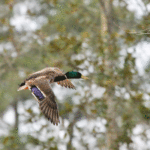
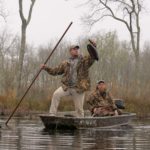
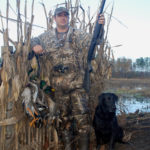
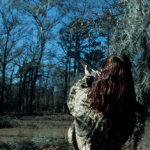
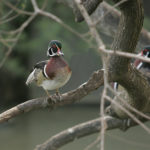
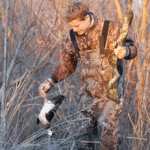
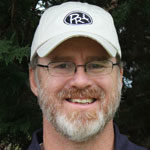
Be the first to comment